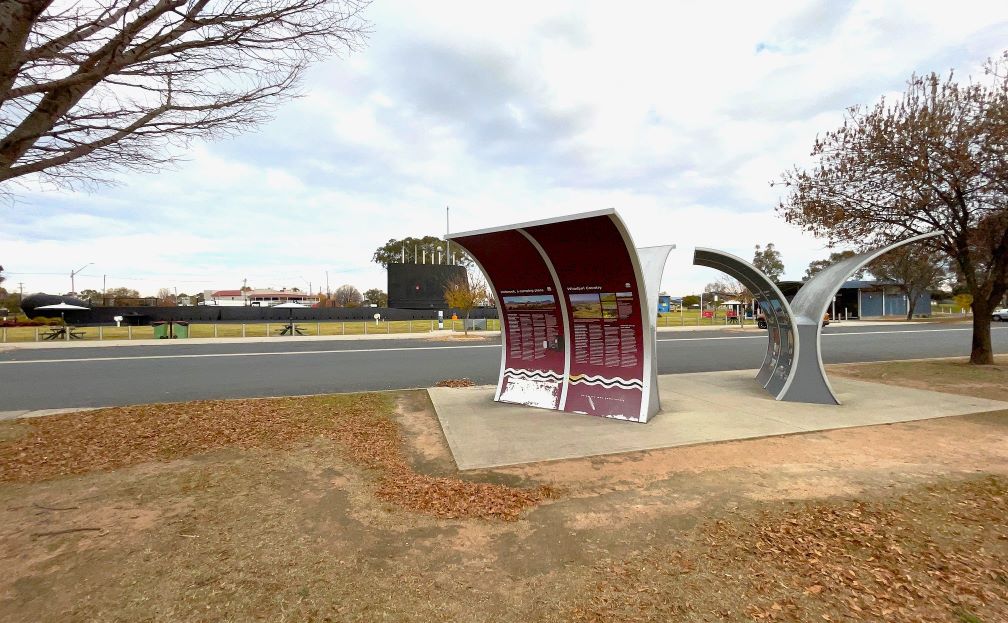Learning the stories of where you live
Wherever you stand in the landscape, the ancient, rich history and culture of First Nations People exists, and so it is worth taking the time to learn more. If you have picked up this guide, it’s likely you are already keen to discover and nurture something more for your farm and the landscape within which it sits. Taking this a step further and being curious about the history, the stories, the beliefs, the landscape practices and the people who walked before you provides an opportunity to connect you to the patch you are on at a deeper level.
If you have lived where you have for a while, perhaps you know the stories, but maybe you are new to the landscape in which you live or maybe you are living on Country. Whatever it is for you, planning revegetation activities is a chance to pause and look at your landscape through a First Nations lens. The stories and culture intertwine deeply with Country and the land management practices differ greatly to western land management.
Following are prompts that might guide and support your learning about the land you are on, its story and its significance within the broader landscape.
Walk Together & Contribute
Building relationships with the local First Nations community will open up the opportunities to learn about how you can work together with your local First Nations organisations and community. Walking together on Country assists strengthening connections to Country and place, and build deeper relationships and trust.
Relationships are two-way interactions. Ask how you can contribute to First Nations communities in your area.
Some useful links to get you started
Understand
Seek to understand the story of what has happened on the land where you live. This can be confronting, and it can feel uncomfortable, but it provides a compelling catalyst for change. Walk together, but if that is not possible there are often public resources in your community – cultural centres, First Nations collections in local museums and libraries, local First Nations sites with information boards – anything that can help you understand local history and contemporary cultural connections.


Sometimes information can be found in unexpected places – this valuable resource is located at the Holbrook Submarine Park in Holbrook. Photos: Peter Rowland.
The Story of Your Country
Be curious about what the landscape looked like and the daily living practices of First Nations People as they nurture and live with Country.
Most significant landscape features have names, purpose, and stories. Research the original names of these features (think creeks, rivers, plains, hills, rock formations and mountains) and, if publicly available and culturally appropriate, write these onto your farm maps and start using these names. If culturally appropriate, seek to learn the stories and practices that nurtured or protected these features.
Before beginning revegetation work, it would be best to learn if there are already identified objects or sites of significance close by [there is an Aboriginal Heritage Information Management System (AHIMS) that can be accessed via the government agency responsible for cultural heritage]. Learn more about these, and how your patch might be connected to stories or cultural practices.
If you find a place of significance or a sacred object on your farm, do you know what you can do to protect it and become a guardian for it?
Who do you contact to share this with? What can this object tell you about the place where it was found?
Contact your Local Aboriginal Lands Council (LALC) or other First Nations organisations in your area. If they are unavailable, Landcare or your regional natural resource agency might also be able to help.
Wiradjuri Plant Use in the Murrumbidgee Catchment
The resource Wiradjuri plant use in the Murrumbidgee catchment (2008) is a great resource on local plants, their First Nations’ names and uses.
This book was developed by the Murrumbidgee Catchment Authority, in consultation with local Aboriginal communities within the Murrumbidgee catchment, and was funded by the Australian and New south Wales Governments. (It is copyright © State of New South Wales, 2008, and is shared here as fair dealing for research or study)
Sourced from NSW Local Land Services – Wiradjuri Plant Guide

Figure 1. Elements used within graphics (created by Shelby Lyons – Marara Designs)
Speaking the Stories
By sharing what you are learning you can continue the stories, create connections to places and practices, and build an understanding of new and ancient ways to nurture our land.
However, be aware that some cultural knowledge is not for the public. Understand what cultural knowledge can be shared and what needs to be kept between you and First Nations People.
To acknowledge and keep First Nations culture in front of mind on the revegetation journey, we are using graphic elements created by First Nations designer Shelby Lyons, from Marara Designs, throughout
this guide.
Find out more…
Local Land Services – Cultural Heritage Values and Mythbusting
Local Land Services – Aboriginal Communities Engagement Program
NSW Office of Environment and Heritage – Aboriginal Cultural Heritage
First Nations Cultural Protection Authority – Cultural Heritage Fact Sheets
Protecting Aboriginal cultural values in the landscape
Aboriginal Heritage Sights and Sounds – Northern Sydney
(Aboriginal Heritage Office)



